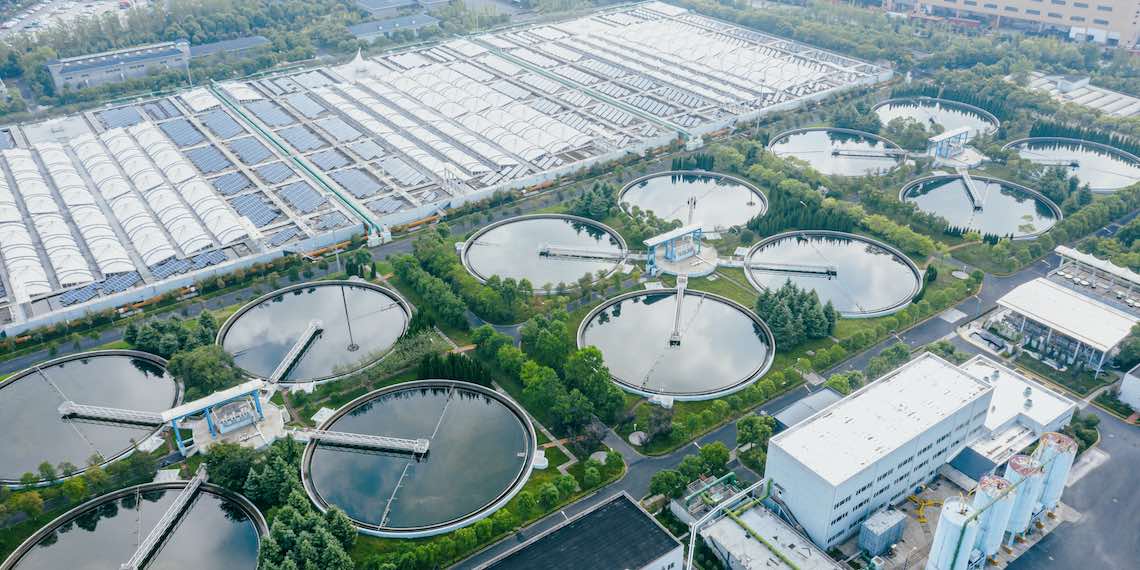The integrated future of water, waste and energy management

As renewable energy technologies become cheaper in comparison to grid-supplied electricity, off-the-grid power has penetrated the average household electricity supply. However, intermittency and the cost of current storage options inhibits the dependability of off-grid solutions.
Similarly, costs associated with conventional water and sewerage are increasing as water utilities maintain ageing assets and try to meet the expectations of customers and regulators to move to net-zero emissions targets. As landfills reach the end of their lives, there is also pressure to find cost-effective and sustainable approaches for solid waste, such as energy from waste.
As we saw with the early adoption of solar panels and stormwater harvesting from rain tanks, communities and households are moving away from traditional water and energy utilities towards decentralised schemes. At present, the systems available are piecemeal and do not bring together the benefits of a fully integrated system.
A number of commercially available systems can provide drinking water and recycled wastewater, compost organic solid waste from households and use it for energy production. This reduces the use of centralised networks of water, sewerage and solid waste management.
However, there is a real need for systems that integrate water, wastewater, solid waste and energy generation. The benefits are multiplied with this in the form of on-site modular units, avoiding the need for distribution infrastructure altogether.
Just as we saw with the electricity industry, those that ignore integrated utility systems risk being left behind or disadvantaged.
Integrating water, wastewater and solid waste management
Integrated systems on a small to medium scale are now technically and economically viable. As such, it’s important that water, energy utilities and waste management companies consider the transition towards integrated approaches. Inaction could result in underused, stranded assets and reduced income as customers continue to move off grid, reducing their dependence on large centralised systems.
Many Australian water utilities are already on this journey, largely driven by state government agendas to reduce energy consumption and move towards renewables. Some are recovering biogas from their anaerobic digesters, which are fed with biosolids, biodegradable liquid and solid waste from external parties (co-digestion), to produce heat and electrical energy for their operations.
Tighter regulation around waste and limited space in landfills provides opportunities for many water utilities to integrate waste management into their operations. As an example, many local councils have merged their water, wastewater and solid waste management into one department to leverage the benefit of increasing biogas yields.
Some property and housing developers are being forced to delay new land development for residential areas on the fringes of current utility service areas, such as in Western Brisbane, Sydney and Melbourne. While there is demand from clients to purchase land, the water and sewerage services are not yet available. An integrated, decentralised utility capability could allow developers to fast track these schemes rather than wait for the availability of centralised systems to provide the services.
Another opportunity for water utilities is to consider alternative servicing arrangements for growth corridors, rather than following the traditional approach of building significant underground infrastructure for water reticulation and sewage collection systems. Ultimately, a modular system could be incorporated within the initial property build.
Other remote operations, such as eco-tourism resorts and mining camps, which currently operate multiple small systems for water supply, sewage treatment, solid waste management and energy supply, could also access many benefits from an integrated utility system as a packaged facility delivered to the site.
A solution with multiple benefits
The benefit of a localised integrated utility system is that water and wastewater can be treated and solid waste managed by a single system, alongside a power supply close to where the services are needed. In addition, energy can be generated from waste for heating and cooling requirements.
The benefits of this approach include:
- emissions are controlled through a potentially carbon negative approach
- recovery of clean water from wastewater
- heat from waste combustion can be used to sterilise water and heat the household
- fewer trucks on the road removing household waste
- reduced transmission losses for electricity
- reduced pumping of water
- reduced wastewater discharge into the environment
- energy self-sufficiency
- zero fossil fuel consumption
- lowest overall cost for consumers.
A particular example is the Integrated Utility System that works across many scales of application. Such a system could also be integrated with a LAVO system, which produces hydrogen from excess rooftop solar energy for the electricity supply.
Making the transition and embracing opportunities
While decentralised systems have been around for some time, the idea of a completely integrated approach for utilities based on efficient thermal systems is new. The capital cost of such a system is approaching the costs of a typical centralised system. A new connection for just water and sewerage is currently $20,000 to $30,000. With an integrated utility system, the cost is approximately $30,000 and expected to reduce as uptake increases. The approach offers economies of scale in volume supply.
Further, though the ongoing maintenance costs are minimal, the savings are large. Based on our calculations, an average household would save approximately $1500 on water and wastewater rates, $500 on solid waste disposal and $2000 on energy costs per year, including electricity and gas.
Even if there is an existing water sewerage connection, there are potential savings of at least $4000 per annum for a household of three people. For larger households, the savings would be even higher.
There is clear potential for utilities to operate decentralised systems to augment their existing centralised approaches. As such, utilities would benefit from building their understanding of how decentralised utility systems might impact their overall business. Planning for multiple scenarios will help harness the opportunities afforded by disruption.
